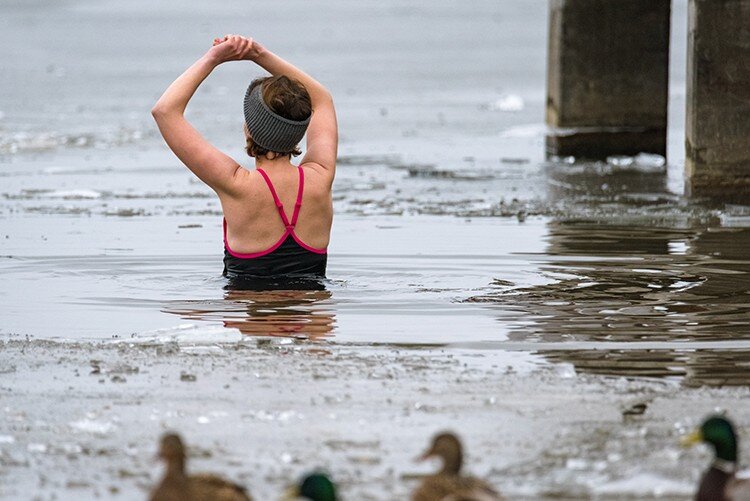The term ‘cold water shock’ refers to a range of natural reactions that our bodies take to protect us when we enter cold water (although these reactions can sometimes work against us). With cold water being anything from approximately the temperature of a swimming pool and below, we are not just talking about icy cold water here.
Its that time of year were people head off towards open waters and police are urging people not to be tempted to swim in dangerous open waters during the warm weather as it could cost you your life.

Why is cold water shock dangerous?
Anything below 15°C is defined as cold water and can seriously affect your breathing and movement, so the risk is significant most of the year.
Average UK and Ireland sea temperatures are just 12°C. Rivers such as the Thames are colder – even in the summer.
Ant Middleton tests the Float to Live survival skill with the RNLI
How does it happen and what are the cold water shock symptoms?
Cold water shock causes the blood vessels in the skin to close, which increases the resistance of blood flow. Heart rate is also increased. As a result the heart has to work harder and your blood pressure goes up. Cold water shock can therefore cause heart attacks, even in the relatively young and healthy.
The sudden cooling of the skin by cold water also causes an involuntary gasp for breath. Breathing rates can change uncontrollably, sometimes increasing as much as tenfold. All these responses contribute to a feeling of panic, increasing the chance of inhaling water directly into the lungs.
This can all happen very quickly: it only takes half a pint of sea water to enter the lungs for a fully grown man to start drowning. You could die if you don’t get medical care immediately.
What about hypothermia?
There is a lot of talk of people dying from hypothermia after falling into cold water, but the truth is that unless they have a way of surviving past the point of swim failure (like wearing a lifejacket), you will drown before you become hypothermic.
Even in really cold water, it takes at least 30 minutes for you to become hypothermic. Crucially, hypothermia remains a risk even when you get out of the water unless you get out of the cold and warm up efficiently and quickly.
How to deal with cold water shock and minimise the risk
If you enter the water unexpectedly:
- Take a minute.The initial effects of cold water pass in less than a minute so don’t try to swim straight away.
- Relax and float on your back to catch your breath. Try to get hold of something that will help you float.
- Keep calm then call for help or swim for safety if you’re able.
If you’re planning on enjoying the water:
- Check conditions– including water temperature – before heading to the coast.
- Visit The Met Office for full surf reports in the UK and Ireland.
- Wear a wetsuit of appropriate thickness for the amount of time you plan to spend in the water and the type of activity you’re doing, if entering.
- Wear a flotation device. It greatly increases your chances of making it through the initial shock.
Respect the water
As you can see, open water can be very dangerous and must be treated with respect. This is exactly why safety campaigners are constantly trying to get the message out there.
Did you know? We offer First Aid Training which includes the treatment of Cold Water Shock, please visit our First Aid at Work Training page for full details. Please feel free to contact us to discuss your training requirements.
